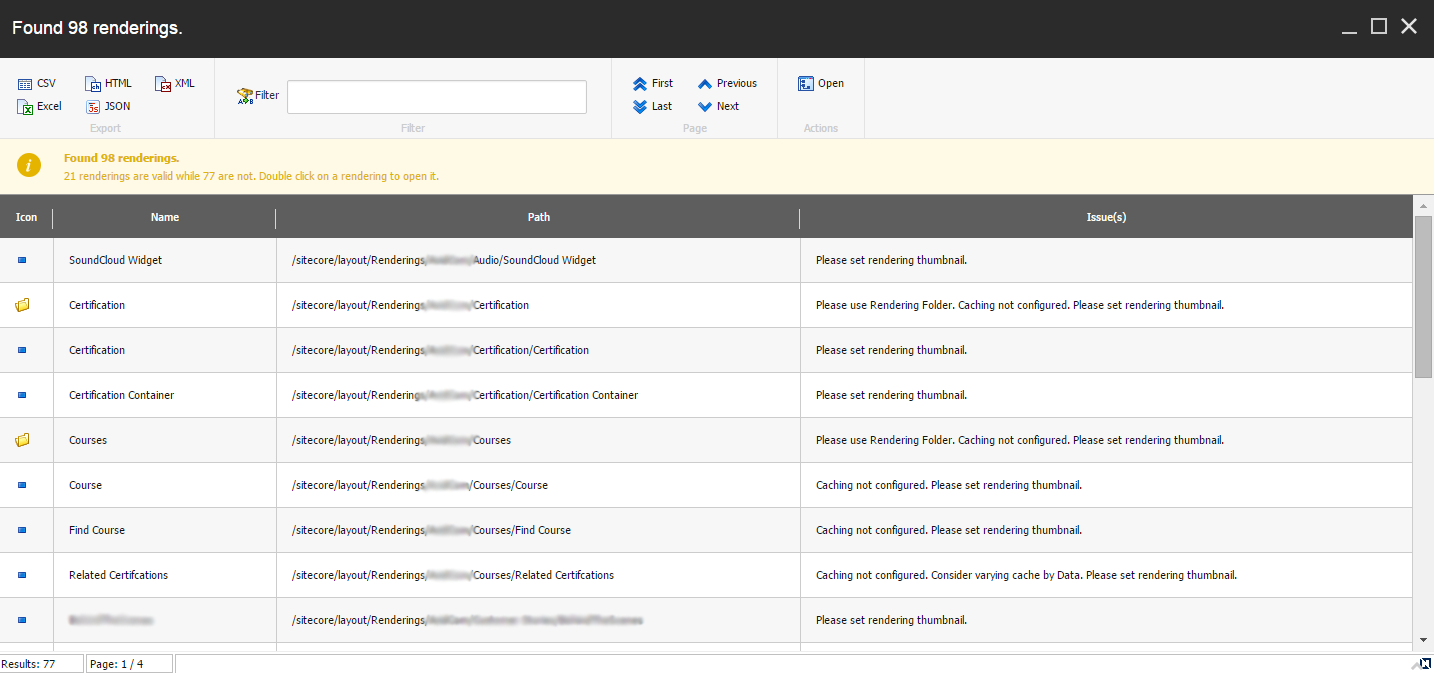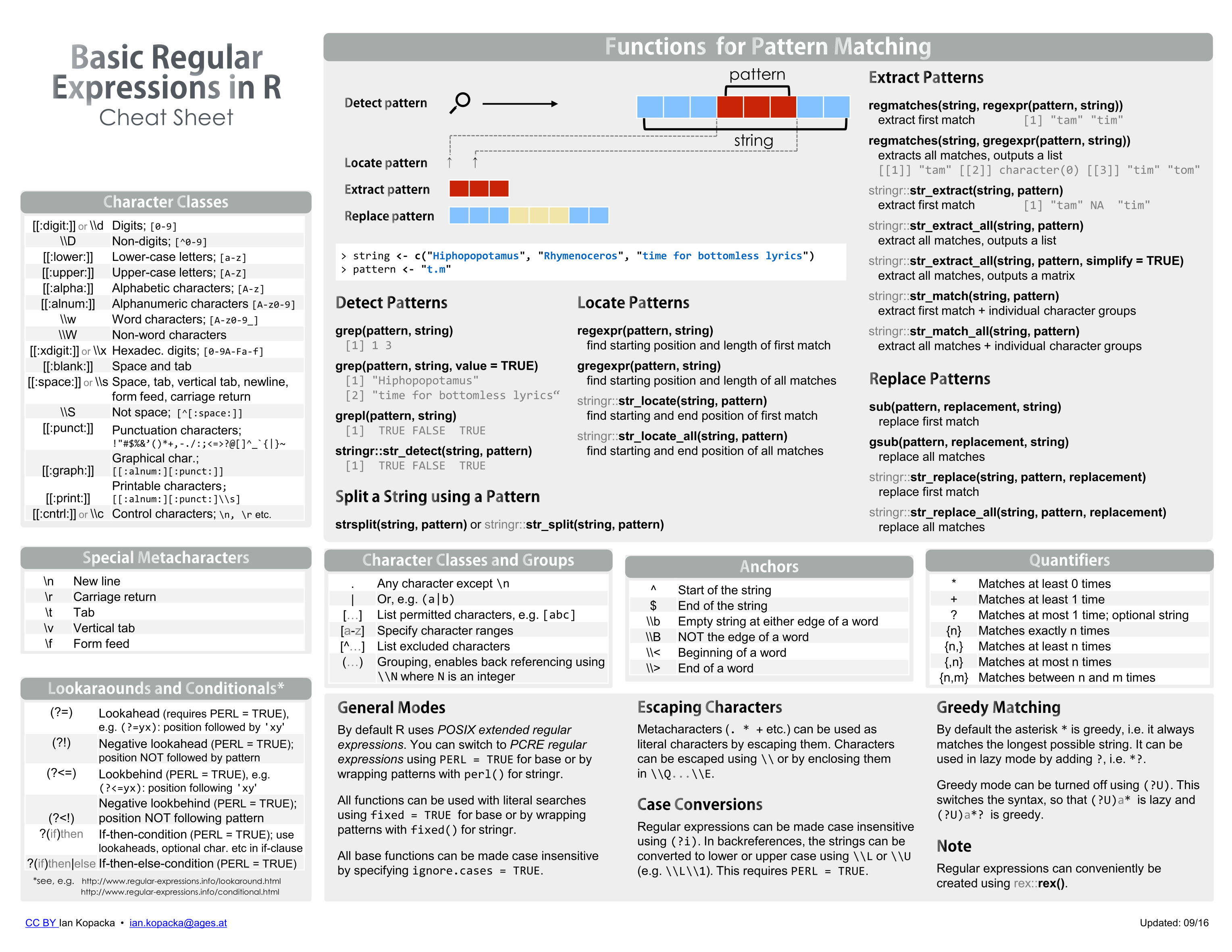It is looking for ' then '. I use this website to learn regex and test things out. It shows you live what is captured and has a cheat sheet that also describes your regex. Memorization will come with regular programming, and the use of the cheat sheet will be less frequent. Many experienced programmers will have one on hand, should it be needed. How the Csharp Cheat Sheet Can Help You. A C# syntax cheat sheet, as well as a PHP cheat sheet, isn’t something just for test days, although if allowed by your. Regular expression syntax cheatsheet This page provides an overall cheat sheet of all the capabilities of RegExp syntax by aggregating the content of the articles in the RegExp guide. If you need more information on a specific topic, please follow the link on the corresponding heading to access the full article or head to the guide.
Intro

The following characters are reserved: []().^$|?*+{}. You’ll need to escape these characters in your patterns to match them in your input strings.
There’s a static method of the regex class that can escape text for you.
Ref:
Named Capture Groups
Because $Matches is of type [Hashtable] we can convert it directly to a [PSCustomObject]:
If you need the properties to be in a specific order this won’t work. But you can use a class for that instead:
Substitutions
The substitution is done by using the $ character before the group identifier.
Two ways to reference capturing groups are by Number and by Name.
By Number - Capturing Groups are numbered from left to right.
By Name - Capturing Groups can also be referenced by name.

The $& expression represents all the text matched.

WARNING
Since the $ character is used in string expansion, you’ll need to use literal strings with substitution, or escape the $ Download microdowell driver. character when using double quotes.

Additionally, if you want to have the $ as a literal character, use $$ instead of the normal escape characters. When using double quotes, still escape all instances of $ to avoid incorrect substitution.
Unicode Code Point ranges
Explanation:
The ranges of Unicode characters which are routinely used for Chinese and Japanese text are:
- U+3040 - U+30FF: hiragana and katakana (Japanese only)
- U+3400 - U+4DBF: CJK unified ideographs extension A (Chinese, Japanese, and Korean)
- U+4E00 - U+9FFF: CJK unified ideographs (Chinese, Japanese, and Korean)
- U+F900 - U+FAFF: CJK compatibility ideographs (Chinese, Japanese, and Korean)
- U+FF66 - U+FF9F: half-width katakana (Japanese only)
C# Regex Cheat Sheet Examples
As a regular expression, this would be expressed as:
This does not include every character which will appear in Chinese and Japanese text, but any significant piece of typical Chinese or Japanese text will be mostly made up of characters from these ranges.
Note that this regular expression will also match on Korean text that contains hanja. This is an unavoidable result of Han unification.
Unicode regex’s let you use code-point ranges or: 1 scripts, [2] blocks, or [3] categories
Blocks are sequential:
U+3400 - U+4DBF is p{InCJK_Unified_Ideographs_Extension_A}U+4E00 - U+9FFF is p{InCJK_Unified_Ideographs}
quote (from below) Some languages are composed of multiple scripts. There is no Japanese Unicode script. Instead, Unicode offers the Hiragana, Katakana, Han, and Latin scripts that Japanese documents are usually composed of.
Here are some refs:
Regex Options
There are overloads of the static [Regex]::Match() method that allow to provide the desired [RegexOptions] programmatically:
Regular Expression Cheat Sheet
Options are ([System.Text.RegularExpressions.RegexOptions] | Get-Member -Static -MemberType Property):
- Compiled
- CultureInvariant
- ECMAScript
- ExplicitCapture
- IgnoreCase
- IgnorePatternWhitespace
- Multiline
- None
- RightToLeft
- Singleline
Regex C# Cheat Sheet Free
Ref:
